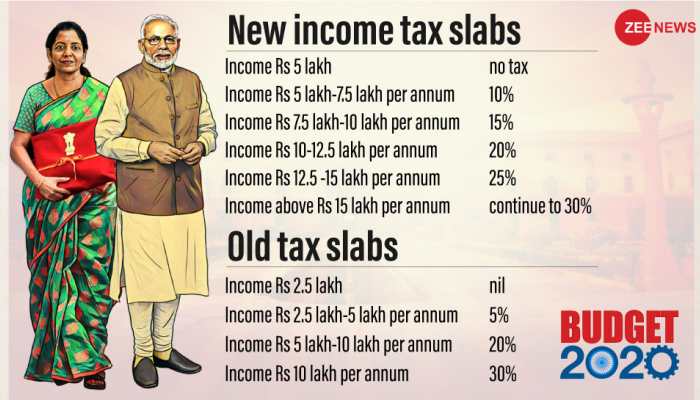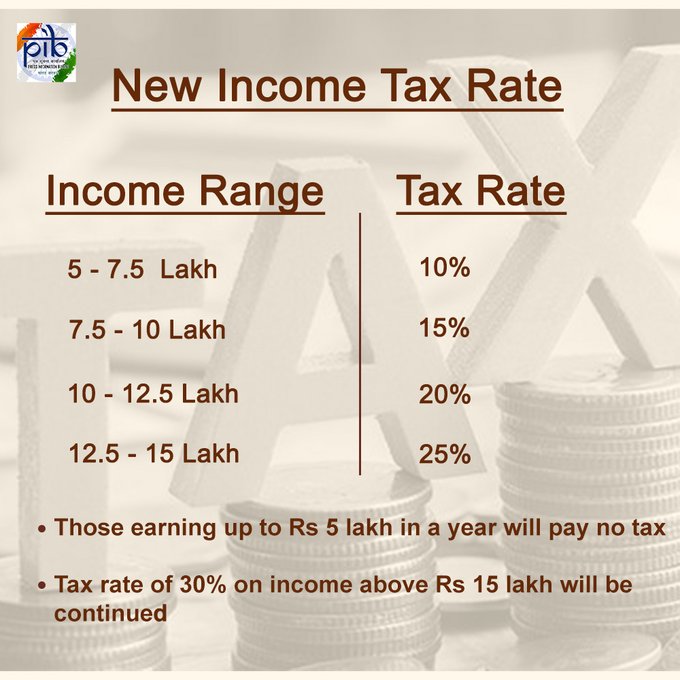Relevance: Prelims/Mains : G.S paper III: Indian Economy
Context:
- In the Budget, a new personal income tax regime was announced. It has rationalised the tax rates and slabs, and has done away with myriad deductions and exemptions currently available to a taxpayer.
• The structure has been made more continuous, with narrower income slabs and applicable income tax rates being lower for a relatively higher income threshold, compared to the old regime.
Aim of the new tax regime:
- The government has argued that since roughly 90 per cent of the taxpayers availed of exemptions of less than ₹2 lakh.
• Under the new low-tax-minimal-exemption regime, the majority of taxpayers are likely to be better off since their disposable income may rise.
• From a macroeconomic standpoint, low tax rates are likely to promote greater tax compliance, potentially increase the tax base, and thereby accrue greater revenues to the exchequer.
Phased reforms:
- Taxpayers can choose to either continue paying taxes according to higher slab rates and claim deductions and exemptions as they exists now, or switch to the new regime.
• Such an arrangement is likely to help taxpayers at different income levels optimise their net tax liability, taking into consideration their needs and capacity to invest in scheduled saving and investment instruments.
• It is clear that the Budget signals a clear intent of the government to undertake structural reforms in the extant direct taxation regime, and replace the Income Tax Act 1961 with the Direct Tax Code (DTC), albeit in a phased manner.
• The idea of graduating to a simplified low tax-minimal exemptions regime is indeed the desirable way to move forward.
Faceless e-assessment:
- Faceless e-assessment, which has commenced from early October 2019, shall necessitate a simple, unambiguous tax structure which precludes any possibility of exploitation of loopholes by the taxpayers.
• Further, in case of such misreporting, a simpler tax structure, with limited and specific deductions that are easier to track, will allow the algorithmic evaluation process to check compliance with low model risk (with lower cases of false positives and false negatives). Seen in this light, the new tax regime has taken the first step in the right direction.
• The government also seems to have learnt from the bitter experiences of the demonetisation and GST implementation exercises, which revealed poor transition planning and management.
• Thus, by allowing taxpayers to exert choice in selecting between the old and the new regime, the government has attempted to minimise the shocks as it ultimately phases out the old regime, and thereby all deductions and exemptions, over the next few years.
• The new income tax regime, in its current structure, is far from optimal as it is not going to increase the disposable income of taxpayers at low-income levels.
Marginal benefits:
- The blue dashed line below indicates the tax saving (in the y axis) in the new regime over the old for a taxpayer with exemptions and deductions of ₹4.75 lakh — ₹50,000 in standard deduction, ₹1,50,000 in Section 80C, ₹50,000 in Section 80CCD (NPS), ₹25,000 in Section 80D, and ₹2,00,000 in home loan interest. The income in plotted in the x-axis.
• The red solid line above indicates the tax saving (y axis) in the new regime over the old for a taxpayer with exemptions and deductions amounting to ₹2.25 lakh (₹50,000 in standard deduction, ₹1,50,000 in Section 80C, ₹25,000 in Section80D). The income in plotted in the x-axis.
The two lines represent two categories of taxpayers:
- Those who avail higher deductions and exemptions; and those who avail lower deductions and exemptions.
• The tax saving in the new regime over the old for any particular income can be found by moving along the x-axis to the particular income level and observing the y-axis value at that point.
• It is found that those with higher exemptions and deductions (= ₹4.75 lakh, the blue line) will experience negative tax saving in the new regime over the old, if their income is above ₹5 lakh.
• It is also found that those with lower exemptions and deductions (=₹2.25 lakh, the red line) will have have a negative saving over the old between an income of ₹5 lakh-₹13 lakh.
• In this category of taxpayers, those with income above ₹13.5 lakh would have positive tax saving in the new regime over the old; the tax saving will at the most work out to ₹7,500 at ₹15 lakh income.
Savings impact:
- It is uncertain if the changes proposed in the new tax regime can boost consumption expenditure, but it is more likely to have a larger negative impact on the forced saving and investment behaviour of individuals or households, who actually had some incentive to save in the old regime, to avail benefits from the deductions and exemptions.
• Since most of the scheduled deductions (under Section 80C) were for government-backed small saving schemes, the inflow of funds to those schemes might get hurt.
• On the other hand, with decreasing ROI in such instruments, more savings might flow to the stock market, creating temporary price bubbles.
• As the old regime is fully phased out in the next couple of years, the above concerns need to be addressed.
• A greater balance needs to be achieved between equity and efficiency through further rationalisation of tax rates across income slabs.
• The new regime should build in some incentives to augment the rate of household financial savings (which has substantially come down from around 23 per cent of the GDP in 2012 to around 17 per cent in 2018) so that it does not exacerbate the saving-investment gap and lead to counterproductive effects on the economy.
Conclusion:
- Therefore, the new tax regime will end up accruing only a marginal positive benefit (before cess and surcharge) to high-income taxpayers.
• This brings up the question of whether the intended number of taxpayers would actually choose the new regime over the old.
• As the Chart suggests, there is indeed a greater scope of rationalisation of the rates and the slabs to make it less regressive for low-income earners.
For more such notes, Articles, News & Views Join our Telegram Channel.
Click the link below to see the details about the UPSC –Civils courses offered by Triumph IAS. https://triumphias.com/pages-all-courses.php



